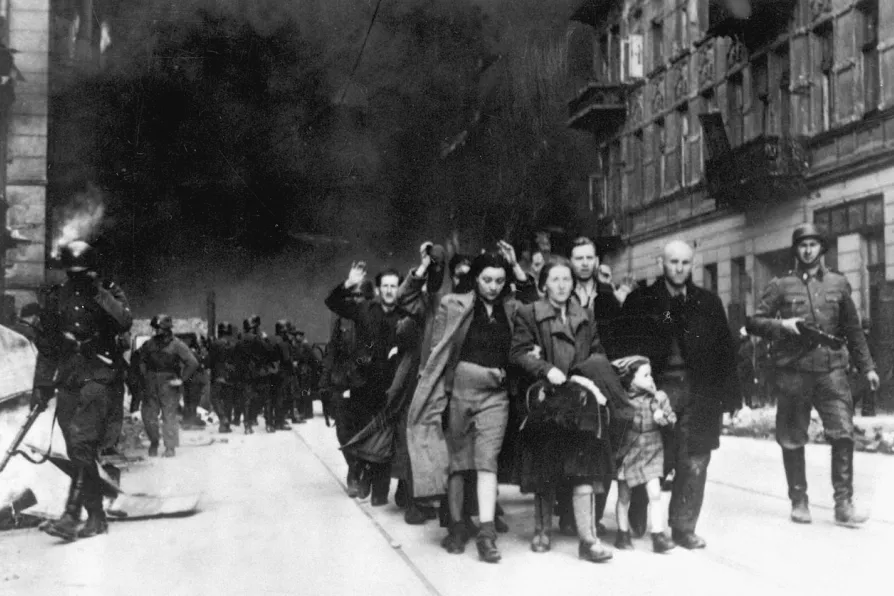What we were unable to shout out to the world
A talk by DAVID ROSENBERG on a panel at Stand Up To Racism’s Holocaust Memorial Day event 2022

 Suppression of Warsaw Ghetto Uprising. Captured Jews escorted by the Waffen SS, 1943
Suppression of Warsaw Ghetto Uprising. Captured Jews escorted by the Waffen SS, 1943
HOLOCAUST memorial events enable us to acknowledge and remember who and what was lost to the world, and learn from individuals’ personal experience.
The Nazis’ final solution attempted not only to wipe out a people, but erase a culture and civilisation — Yiddish culture.
But I am proud to use the Yiddish words of anti-Nazi resisters — “mir veln zey iberleben” — we will outlive them, and “mir zaynen do” — we are here!
Similar stories

Such betrayals to the authorities are strikingly at odds with the history of Jewish persecution, writes LINDA PENTZ GUNTER

JEAN BOASE-BEIER introduces some of the poetry that help us to understand genocides past and present

Political manipulation of history and exceptionalising of anti-semitism as a shield for Israeli war crimes are having a harmful effect on the fight against all racism and fuelling a cynicism that’s especially dangerous in today’s world, argue JULIA BARD and DAVID ROSENBERG

Nick Wright talks to photographer and author JANINA STRUK










